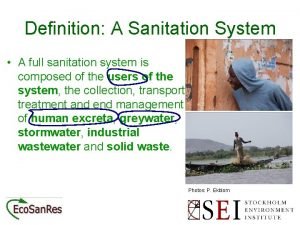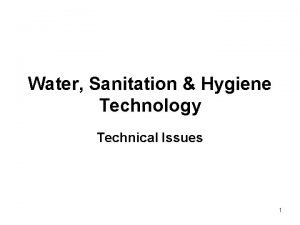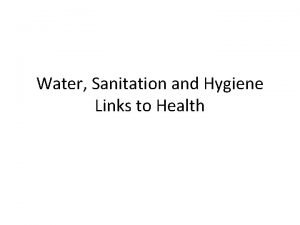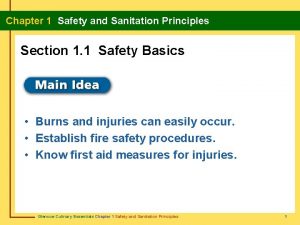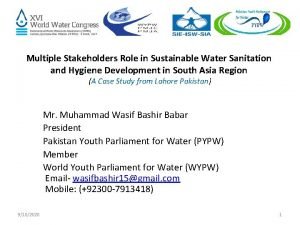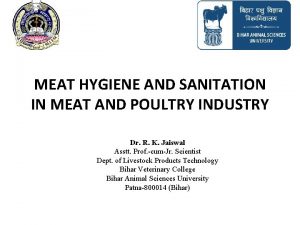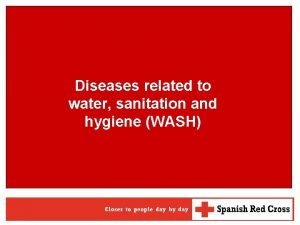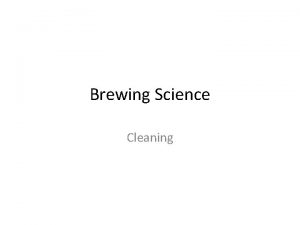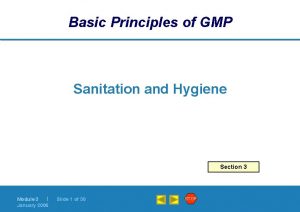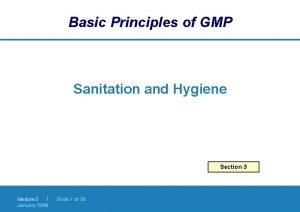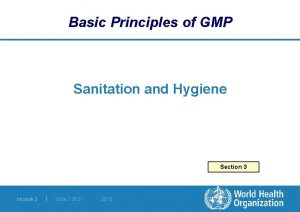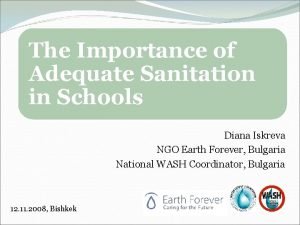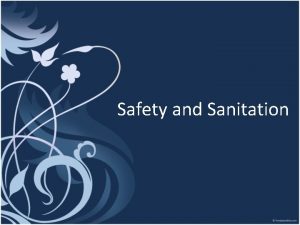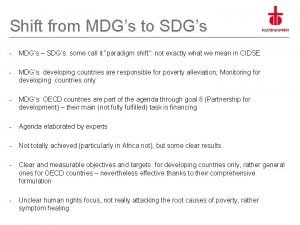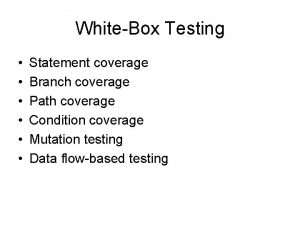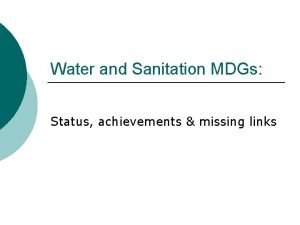Issues of Sanitation Definition and the MDGs Coverage












- Slides: 12

Issues of Sanitation Definition and the MDGs

Coverage Figures According to the 2008 Ghana Demographic Health Survey (GDHS) report • Only 12. 4 percent of people living in Ghana used improved sanitation facilities • 54 percent shared an improved facility with one or more households • 10. 6 percent used unimproved sanitation facilities • 23 percent of the population had no access to any facilities or were engaged in open defecation.

JMP definitions of improved/unimproved sanitation Improved sanitation Facilities not shared that ensure hygienic separation of human excreta from human contact: • Flush/pour flush to: • piped sewer system Unimproved sanitation Facilities that do not ensure hygienic separation of human excreta from human contact: • Flush/Pour flush to elsewhere • septic tank • Pit latrine without slab/open pit • pit latrine • bucket • Ventilated improved pit (VIP) latrine • Hanging toilet/hanging latrine • Pit latrine with slab • No facilities, bush or field • Composting toilet • Shared or public toilets

National Community Water and Sanitation Program (NCWSP) Improved Sanitation/Adequate excreta disposal facilities: • Household VIP Latrine • Simple but protected Pit Latrine • Pour Flush latrine • KVIP • Connection to a sewer or septic tank system

Shared Toilets and Public Toilets Shared sanitation facilities (JMP) Shared sanitation facilities: Sanitation facilities of an otherwise acceptable type shared between two or more households. Shared facilities include public toilets. Public Toilets (NESP, Ghana) Toilet facility basically to cater for transient populations and areas of intense public activity such as lorry parks and markets

Reasons why JMP classifies shared toilets as unimproved • Concerns about the actual accessibility of such facilities throughout the day • The security of users, especially at night

ESHD/WSMP, Ghana Improved Sanitation Facilities • Any Sanitation facility which is adequate, convenient, has user privacy and is hygienic both in technology and operation and maintenance and shared by a maximum of 10 people from different households. "

Indicators of improved sanitation by the ESHD/WSMP, Ghana • Indicators 1. Adequate sanitation facility latrines used by a maximum of 10 persons per squat hole 2. Convenient sanitation facility Latrines located 50 meters or less from the household 3. Private Sanitation Facility Latrines that provides a complete non-transparent enclosure 4. Secured sanitation facility Sanitation facilities that are adequately illuminated (path leading to latrine and the latrine room), structurally stable (absence of significant cracks in the building structure and slabs as well as strong trusses for roofs)

Indicators of improved sanitation by the ESHD/WSMP, Ghana • Indicators 5. Hygienic sanitation Latrines that hygienically separate faeces from facility human contact by ensuring the following; are free from flies, has available anal cleansing materials and containers to hold them, clean toilet seats and bowls (ie. free of excreta) and not littered with anal cleansing materials. 6. Accessible sanitation facility Latrines that remain open for use throughout the day and night 6. Adequacy (No. to use) 5 and 10

What Next: Undertake studies to find out the following: 1. Whether or not improved sanitation facilities (not shared) in Ghana meet the criteria outlined below; o o o adequacy convenience has user privacy and ensures adequate security is hygienic both in technology, operation and maintenance accessibility at all times (night, during rains etc) ensures hygienic separation of human excreta from human contact 2. Factors that influence the sharing of sanitation facilities in Ghana

What Next(Cont’d) 3. Users opinion on shared latrines (example, are users happy with improved shared toilets? is their continued use mandated by circumstance, culture, or both? Would users agree that shared toilets are unimproved and that they (the users), should be counted as not having proper toileting facilities? ) 4. Current trends in the provision of sanitation facilities (types) in Ghana, for example by government, private individuals (ie households), NGOs etc. 5. Recommendations on the capacity of shared sanitation facilities to contribute to Ghana’s achievement of the Millennium Development Goal (MDG) target for sanitation.

THANK YOU
 Sanitation system definition
Sanitation system definition Sanitation and hygiene
Sanitation and hygiene Sanitation and hygiene
Sanitation and hygiene Chapter 1 safety and sanitation principles
Chapter 1 safety and sanitation principles Stakeholders in water and sanitation
Stakeholders in water and sanitation Poultry hygiene and sanitation
Poultry hygiene and sanitation Sanitation and hygiene
Sanitation and hygiene Cleaning and sanitation manual for breweries
Cleaning and sanitation manual for breweries Gmp sanitation and hygiene
Gmp sanitation and hygiene Gmp sanitation and hygiene
Gmp sanitation and hygiene Gmp sanitation and hygiene
Gmp sanitation and hygiene Compendium of sanitation systems and technologies
Compendium of sanitation systems and technologies Concept school
Concept school
